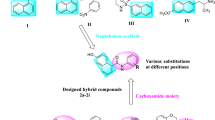Summary
Ethylcholine mustard aziridinium (ECMA) inhibits choline transport in synaptosomes at a half-maximal concentration of about 20 μm. The rate of inhibition falls off rapidly after 10 min and the concentration dependency reaches a plateau at about 100 μm. The inhibition is not removed by washing the synaptosomes, and choline and hemicholinium-3 protect the carrier against attack by the mustard. Choline efflux, particularly that stimulated by choline in the medium (transactivation) is also inhibited by the aziridinium compound. Similarly choline influx activated by preloaded internal choline is inhibited by ECMA. The mustard can enter the synaptosomes in an active form but most of the carrier is alkylated when facing the outside. Prior depolarization of the synaptosomes causes an increase in the rate of inhibition by ECMA which is proportionally about the same as the increase in choline influx also caused by depolarization. At low ECMA concentrations the rate of inhibition is that of a first-order reaction with the carrier but at high ECMA concentrations the translocation of the carrier to the outward-facing conformation controls the rate of inhibition. Using a model of choline transport with some simplifying assumptions it is possible to estimate the amount of carrier; cholinergic synaptosomes carry about six times the concentration of carrier found in noncholinergic ones. In noncholinergic synaptosomes the carrier faces predominately out, the reverse in cholinergic ones. The rate constant of carrier translocation is increased by combination with choline some six- to sevenfold to about 3.5 min−1. The rate constant of ECMA attack on the carrier is about 440m −1 sec−1.
Similar content being viewed by others
References
Barlow, P.B., Marchbanks, R.M. 1984. Effect of ethylcholine mustard (ECMA) on choline dehydrogenase and other enzymes of choline metabolism.J. Neurochem. (to be published)
Clement, J.G., Colhoun, E.H. 1975. Inhibition of choline transport into human erythrocytes by choline mustard aziridinium.Can. J. Physiol. Pharmacol. 53:1089–1093
Devés, R., Krupka, R.M. 1979. The binding and translocation steps in transport as related to substrate structure: A study of the choline carrier of erythrocytes.Biochim. Biophys. Acta 557:469–485
Dunant, Y., Gautron, J., Israel, M., Lesbats, B., Manaranche, R. 1974. Evolution de la decharge de l'organe electrique de la Torpille et variations simultanees de l'acetylcholine au cours de la stimulation.J. Neurochem. 23:635–643
Fisher, A., Mantione, C.R., Abraham, D.J., Hanin, I. 1982. Long term central cholinergic hypofunction evoked in mice by ethylcholine aziridinium ion (AF 64A)in vivo.J. Pharmacol. Exp. Ther. 222:140–145
Fruton, J.S., Stein, W.H., Stahmann, M.A., Golumbic, C. 1946. Chemical reactions of nitrogen mustard gases. IV. The reactions of the nitrogen mustard gases with chemical compounds of biological interest.J. Org. Chem. 11:571–580
Gill, E.W., Rang, H.P. 1966. An alkylating derivative of benzilylcholine with specific long-lasting parasympatholytic activity.Mol. Pharmacol. 2:284–297
Golumbic, C., Fruton, J.S., Bergmann, M. 1946. Chemical reactions of the nitrogen mustard gases. 1. The transformations of methyl-bis (β-chloro ethyl) amine in water.J. Org. Chem. 11:518–535
Gray, E.G., Whittaker, V.P. 1962. The isolation of nerve endings from brain. An electron microscopic study of cell fragments derived by homogenisation and centrifugation.J. Anat. 96:79–87
Hodgkin, A.L., Martin, K. 1965. Choline uptake by giant axons ofLoligo.J. Physiol. (London) 179:26–27
Katz, B., Miledi, R. 1977. Transmitter leakage from motor nerve endings.Proc. R. Soc. London 196:59–72
King, R.G., Marchbanks, R.M. 1980. Solubilization of the choline transport system and re-incorporation into artificial membranes.Nature (London) 287:64–65
King, R.G., Marchbanks, R.M. 1982. The incorporation of solubilized choline transport activity into liposomes.Biochem. J. 204:565–576
Krupka, R.M., Devés, R. 1980. The choline transport system of erythrocytes: Distribution of the free carrier in the membrane.Biochim. Biophys. Acta 600:228–232
Lowry, O.H., Rosebrough, N.J., Farr, A.L., Randall, R.J. 1951. Protein measurement with the Folin phenol reagent.J. Biol. Chem. 193:265–275
Mantione, C.R., Zigmond, M.J., Fisher, A., Hanin, I. 1983. Selective pre-synaptic cholinergic neurotoxicity following intrahippocampal AF 64A injection in rats.J. Neurochem. 41:251–255
Marchbanks, R.M. 1968a. Exchangeability of radioactive acetylcholine with the bound acetylcholine of synaptosomes and synaptic vesicles.Biochem. J. 106:87–95
Marchbanks, R.M. 1968b. The uptake of14C choline in synaptosomesin vitro.Biochem. J. 110:533–541
Marchbanks, R.M., Wonnacott, S., Rubio, M.A. 1981. The effect of acetylcholine release on choline fluxes in isolated synaptic terminals.J. Neurochem. 36:379–393
Martin, K. 1968. Concentrative accumulation of choline by human erythrocytes.J. Gen. Physiol. 51:497–516
Martin, K. 1969. Effects of quaternary ammonium compounds on choline transport in red cells.Br. J. Pharmacol. 36:458–469
Martin, K. 1972. Extracellular cations and the movement of choline across the erythrocyte membrane.J. Physiol. (London) 224:207–230
Meyer, E.M., Cooper, J.R. 1983. High affinity choline uptake and calcium dependent acetylcholine release in proteoliposomes derived from rat cortical synaptosomes.J. Neurosci. 3:987–994
Richardson, P.J. 1981. Quantitation of cholinergic synaptosomes from guinea pig brain.J. Neurochem. 37:258–260
Rylett, J.B., Colhoun, E.H. 1979. The interactions of choline mustard aziridinium ion with choline acetyltransferase (EC 2.3.1.6).J. Neurochem. 32:553–558
Rylett, B.J., Colhoun, E.H. 1980. Kinetic data on the inhibition of high affinity choline transport into rat forebrain synaptosomes by choline-like compounds and nitrogen mustard analogues.J. Neurochem. 34:713–719
Wonnacott, S., Marchbanks, R.M. 1976. Inhibition by botulinium toxin of depolarization-evoked release of14C acetylcholine from synaptosomesin vitro.Biochem. J. 156:701–712
Author information
Authors and Affiliations
Rights and permissions
About this article
Cite this article
Curti, D., Marchbanks, R.M. Kinetics of irreversible inhibition of choline transport in synaptosomes by ethylcholine mustard aziridinium. J. Membrain Biol. 82, 259–268 (1984). https://doi.org/10.1007/BF01871635
Received:
Revised:
Issue Date:
DOI: https://doi.org/10.1007/BF01871635




